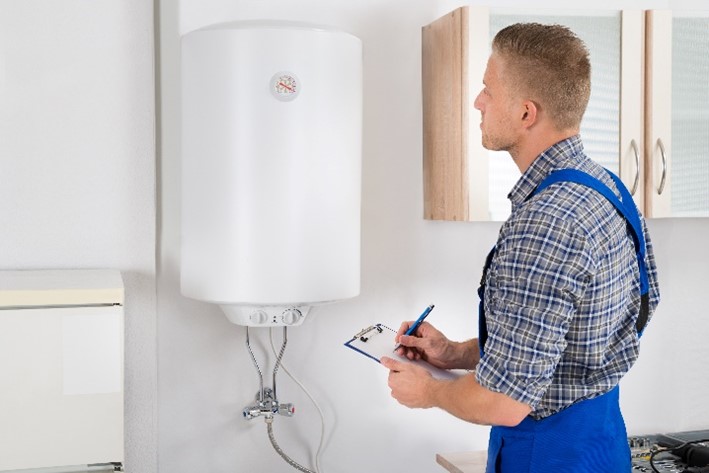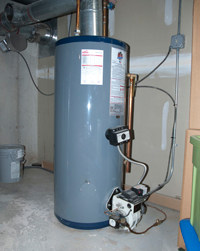Step-by-Step Steps to Maintaining Your Home's Hot Water System
Make An AppointmentAre you interested in guidance concerning What Kind of Maintenance Do Water Heaters Need??

Hot water is essential for day-to-day convenience, whether it's for a rejuvenating shower or washing recipes. To guarantee your warm water system runs efficiently and lasts much longer, routine maintenance is vital. This post supplies useful tips and understandings on exactly how to maintain your home's warm water system to avoid disturbances and pricey fixings.
Intro
Maintaining your home's warm water system may appear challenging, however with a few straightforward steps, you can guarantee it operates efficiently for many years to find. This overview covers whatever from understanding your warm water system to DIY upkeep tips and recognizing when to employ professional aid.
Significance of Keeping Your Hot Water System
Normal maintenance not just extends the life-span of your hot water system however also ensures it runs efficiently. Neglecting upkeep can result in lowered efficiency, higher power bills, and also premature failure of the system.
Indicators Your Hot Water System Requirements Upkeep
Knowing when your hot water system requires attention can stop significant issues. Watch out for indicators such as inconsistent water temperature, odd sounds from the heating unit, or rustic water.
Understanding Your Hot Water System
Before diving into maintenance jobs, it's handy to understand the fundamental parts of your warm water system. Usually, this consists of the hot water heater itself, pipes, anode rods, and temperature controls.
Regular Monthly Upkeep Tasks
Regular monthly checks can assist capture small concerns prior to they rise.
Flushing the Water Heater
Flushing your hot water heater eliminates debris build-up, boosting efficiency and prolonging its life.
Checking and Changing Anode Rods
Anode poles stop corrosion inside the container. Inspecting and replacing them when worn out is important.
Checking and Changing Temperature Level Setups
Changing the temperature level settings makes certain ideal performance and safety.
DIY Tips for Maintenance
You can do several upkeep jobs on your own to maintain your warm water system in top condition.
Checking for Leaks
Consistently evaluate pipelines and links for leakages, as these can lead to water damage and higher bills.
Testing Pressure Alleviation Valves
Testing the stress safety valve guarantees it works appropriately and protects against extreme pressure buildup.
Insulating Pipes
Shielding warm water pipelines minimizes warm loss and can save power.
When to Call an Expert
While DIY maintenance is useful, some problems require specialist expertise.
Facility Problems Requiring Specialist Aid
Instances include significant leakages, electrical troubles, or if your hot water heater is regularly underperforming.
Routine Professional Upkeep Advantages
Professional upkeep can include thorough inspections, tune-ups, and ensuring conformity with safety criteria.
Final thought
Normal maintenance of your home's warm water system is crucial for effectiveness, longevity, and expense savings. By complying with these tips and recognizing when to seek expert help, you can ensure a dependable supply of hot water without unanticipated interruptions.
How to Maintain an Instant Hot Water Heater
Before tinkering with your hot water heater, make sure that it’s not powered on. You also have to turn off the main circuit breaker and shut off the main gas line to prevent accidents. Also turn off the water valves connected to your unit to prevent water from flowing into and out of the appliance. 2. When you’re done, you have to detach the purge valves’ caps. These look like the letter “T†and are situated on either side of the water valves. Doing so will release any pressure that has accumulated inside the valves while at the same time avoid hot water from shooting out and burning your skin. 3. When the purge valves’ caps are removed, you have to connect your hosing lines to the valves. Your unit should have come with three hoses but if it didn’t, you can purchase these things from any hardware or home repair shops. You can also get them from retail stores that sell water heating systems. Read the user’s manual and follow it to complete this task properly. When the hosing lines are connected, open the purge port’s valves. 4. You should never use harsh chemical cleaners or solutions when cleaning your unit. Make use of white vinegar instead. It should be undiluted and you’ll probably use about 2 gallons. 5. Now flush your water heater. This task should probably take about 40 minutes. We can’t give you specific directions for this because the procedure is carried out depending on the type, model and brand of your heater. With that being said, refer to the user’s manual. 6. When you’re done draining the unit, you have to turn off the purge port valves again. Remove the hosing lines that you earlier installed on each of the water valves. Put the valve caps (purge port) back in their respective places and be very careful so as not to damage the rubber discs that are found inside these caps. 7. Now that everything’s back in place, check your user’s manual again to find out how to reactivate your water heating system. 8. Once it is working, turn one of your hot water faucets on just to let air pass through the heater’s water supply pipes. Leave the tap on until water flows smoothly out of it. https://www.orrplumbing.com/blog/2014/september/how-to-maintain-an-instant-hot-water-heater/

As a serious person who reads about Tips For Maintaining Your Hot Water Heater, I figured sharing that piece of content was smart. Sharing is caring. Helping people is fun. I praise you for being here. Return soon.
Call Today